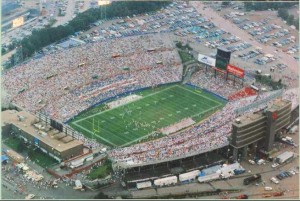
When I took over marketing for the New England Patriots in 1997, the organization generated about $16 million in total marketing revenue (including suites and a very rudimentary version of club seats). The organization operated in a pure Transactional Methodology. Sales reps would “plop down” a package full of inventory from which companies would buy. Sponsors would use the inventory, which included signs, media, and logo rights, for branding and other methods of promotion. The transaction was complete and the sales reps were off to the next sale. This was a very typical way of doing business in the NFL (and still is with some teams).
The issue with this approach was that when the contract expired, it was a coin flip to evaluate whether or not the inventory helped the sponsor see a return on their investment. Often, sponsors would not renew, which caused the staff to operate in a very reactionary, year-to-year selling method. They continuously worked to replace lost sponsors; like a hamster running on its wheel – lots of motion, no progress.
Because of this, growth was very difficult, and the marketing group relied on wins to fuel its financial advances. The problem is that a sports team’s winning is unpredictable, and the folks in marketing have zero control over the performance of the team. Dependence on the team’s win record is not a great strategy to generate reoccurring revenue.
It was clear to me from the onset that we must build a different model to secure financial sustainability. So we restructured our operating model to a Relationship Oriented Methodology. With this approach, we still marketed team assets, such as signs, media, and logo rights, however, we sold them just to recognize revenue. The real business deal was to identify the sponsors’ needs and goals and show how we could help accomplish them. Our job wasn’t to sell them anything. Our primary job became to help our partners “do business.” We changed the structure of the department and invested our efforts into learning about our partners’ business and what helped them succeed. This included learning as much as possible about the individuals within the company. We stopped being sales people and became Relationship Architects.
This change in our approach allowed us to retain sponsors after contract expiration, grow relationships organically, and gain additional partnerships regardless of wins and losses on the field, and in spite of an old dilapidated stadium around us (this was when the Patriots played in Foxboro stadium, before Gillette Stadium was built). It allowed the organization to grow revenue to $24 million in a short period of time, in that old stadium before we ever won a Super Bowl. The strategic changes that increased revenue had nothing to do with the team, were not about wins, and had nothing to do with building a state of the art stadium. The transformation we made was from a Transactional organization to a one based on Relationships. Our marketing approach and structure alone allowed us to flourish and experience growth in both revenue and the number of partners we had.
In addition, and more importantly, we were positioned for enormous success and growth when the team did win, and when we built Gillette Stadium. Our new strategy allowed us to maximize revenues when those aspects did come into play. Relationships truly equal Revenue.
